

Top 20 Qualities of a Good Student

7 Types Of Soil On Earth’s Surface

- Child Learning
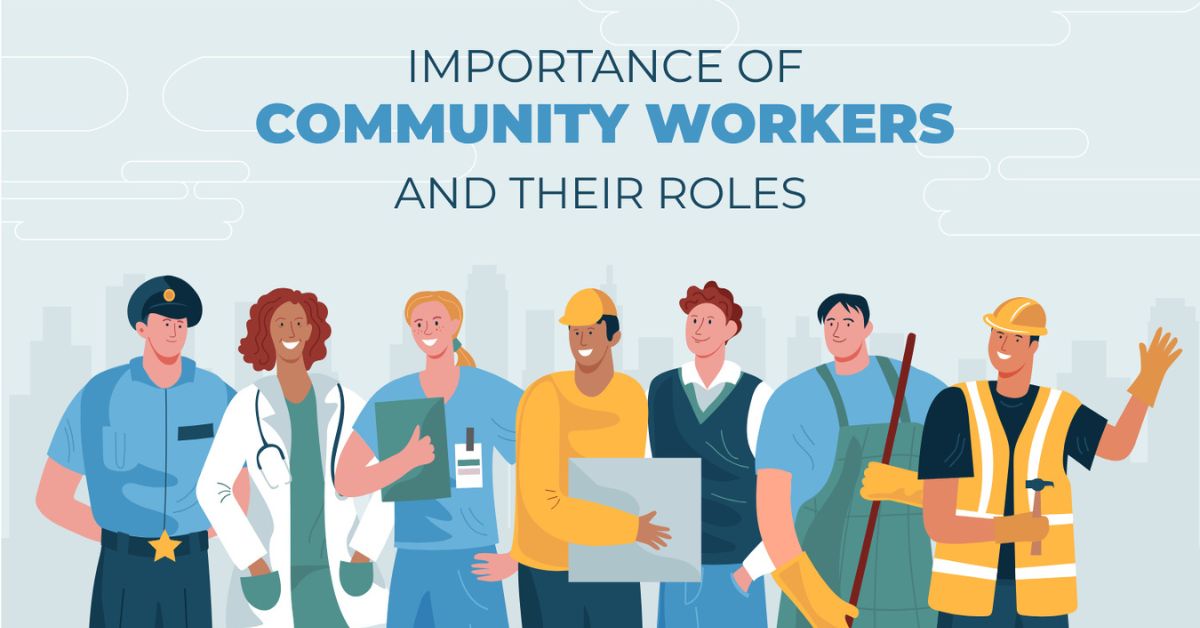
Importance of Community Workers and Their Roles
Community workers are people we rely on in emergencies. They are trained professionals who know the right solutions to health threats, or disastrous problems. We head to them to get expert help and to get rid of problematic situations before they get severe.
Students need to learn community workers so that they know whom to rely on in a crisis. Community workers like doctors, firefighters, and nurses.
Children may often avoid strangers even during an emergency because they are taught to do so at home and school. Teaching about community workers will help them recognize people that they can trust during a certain situation.
At JBM Global School, one of the top schools in Noida , students are educated not only about community workers and their roles but also about showing respect for their contributions.
In this article, we will go through the importance of community helpers and how they serve our society. Let’s dive in.
Who are Community Workers?
Community workers are citizens who work in our community t o ensure the well-being of the community. They perform their duties to ensure that people in society stay happy, safe, and healthy. Community helpers perform their duties to the best to ensure that we live in a safe environment and have the necessary services.
Role of Community Workers
The main role of a community helper is to guide and help the members of the community to make their lives easier. They have different roles depending on the specialization they work in. However, the general role of a community worker is to be in charge of society.
Community workers provide emotional support, guidance, and counselling to individuals and families facing various challenges. They may help with issues such as health emergencies, fire in facilities, crime reports, and lifestyle issues, performing the jobs such as house help, serving, plumbing, farming, and more.
Now that you know who is a community helper , let us look at some examples of them and learn what they do.
Also Read : 11 Engaging Gandhi Jayanti Activities For Kids
Community Workers and Their Jobs
Here is a list of community helpers and the duties they perform:

- Doctors are experienced medical professionals who are trained and licensed to treat patients.
- They are community helpers who perform checkups and provide medicines to treat diseases.
- They work in private clinics and hospitals.

- A nurse is there to help doctors.
- Nurses work in healthcare facilities and hospitals.
- They look after the patients, interact with doctors, provide medicine, and check critical symptoms in patients.
- They play an important role in the healthcare workforce.

- The role of a teacher as a community helper is to provide education to students.
- They teach different subjects in schools, colleges, and institutions.
- Teachers are also known as nation builders.
- They also play an important role in the development and growth of the students apart from their studies.
4. Firefighter

- Firefighters are community helpers who stop fires and rescue people from fire-affected facilities.
- They work at fire stations.
- They reach the affected zone via fire trucks.
- They use fire trucks to carry necessary equipment like ladders, water tanks, ropes, and first aid.
5. Police Officers
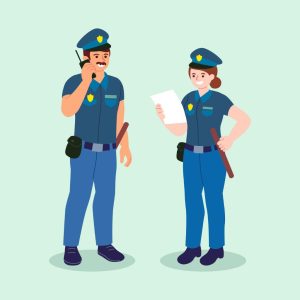
- Police officers are responsible for protecting people from crime and threats.
- They are responsible for maintaining law and order in a particular area.
- They catch offenders and ensure the safety of people.
- A policeman also shows up in the time of emergencies and provides appropriate support.
6. Fisherman

- The role of a fisherman is to catch fish.
- They sell the fish in the fish market or to the fish seller to earn their living.
- They use fishing nets, boats, and other tools to catch fish from lakes, rivers, seas, and oceans.
7. Soldiers
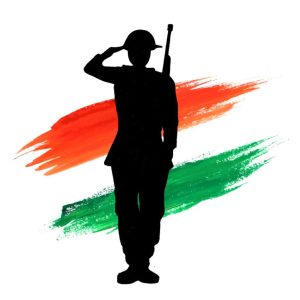
- The role of the soldiers is to protect our country
- They are trained with arms and guns and work on borders.
- They fight battles to defeat the enemy.
- They are alert to any threat or danger in the country.
8. Astronauts

- An astronaut is trained to carry out experiments in outer space.
- They enter space in a spacecraft to study planets and stars.
- Astronauts play an important role in space exploration and learning about the Earth and the solar system.
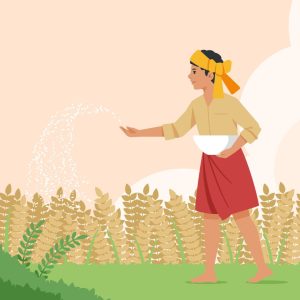
- Farmers grow plants and crops to produce food for humans.
- They plant the seeds, water them, use manure, and harvest them.
- They use farming equipment to maintain the growth of the crops.
- They sell the harvested crops to customers, other farmers, and stores.
10. Mail Carrier
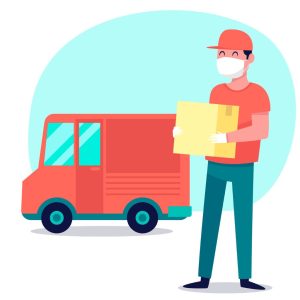
- A mail carrier is responsible for delivering mail and packages to homes and businesses.
- They work for postal services or courier companies.
- They organize mail and deliver them to various addresses.
11. Mechanic

- Mechanics are community helpers trained to repair and maintain vehicles and machinery.
- They work in garages, auto repair shops, or specialised workshops.
- They test mechanical issues using specialised tools.
- They do repairs, replace faulty parts, and conduct regular maintenance in vehicles.
12. Gardener
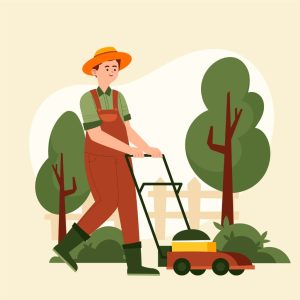
- A gardener is responsible for cultivating and maintaining plants and gardens.
- They work in parks, private residences, or botanical gardens.
- Gardeners plant a variety of flowers, trees, shrubs, and
- .They water, fertilise, prune, and weed the plants to maintain their health.

- A chef is a professional who prepares and cooks meals in restaurants, hotels, or catering services.
- They plan menus, select and prepare ingredients, and use different cooking techniques.
14. Garbage Collector
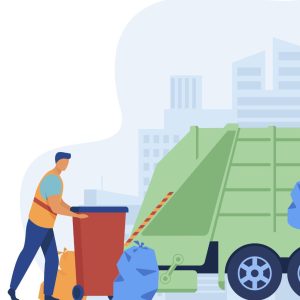
- They are our helpers who collect and dispose of trash and garbage from homes, businesses, and public areas.
- They perate garbage trucks or other collection vehicles to gather waste.
- They maintain cleanliness and hygiene in the community by keeping the surroundings free from litter.
- They contribute to waste management and environmental sustainability.

- Waiters take orders from customers and serve food and drinks in restaurants or cafes.
- They also decide on the menu and assist customers.
- Coordinate with kitchen staff to inform them about the orders.
16. Janitor
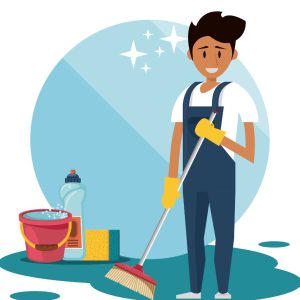
- They clean and maintain the cleanliness of buildings, offices, schools, and other facilities
- They sweep, mop, and vacuum floors, dust surfaces, and empty trash bins.
- They also do minor maintenance tasks, such as changing light bulbs or fixing leaky faucets.
- They ensure a clean and sanitary environment for occupants.
17. Plumber

- Plumbers install, repair, and maintain plumbing systems in homes, buildings, or businesses.
- They identify and fix leaks, clogs, or other plumbing issues.
- They install and connect pipes, fixtures, and appliances (e.g., sinks, toilets, water heaters).
- A plumber conducts inspections to ensure the proper functioning of plumbing systems.
- They provide solutions for water conservation and promote efficient water usage.
18. Electrician
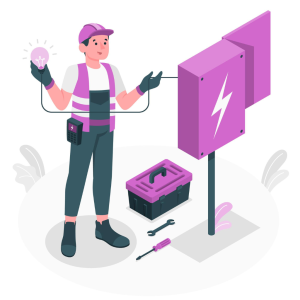
- Electricians take care of electrical systems in facilities.
- They connect wiring, outlets, switches, and light fixtures.
- They also solve electrical problems.
- They provide electrical solutions for new constructions or renovations.
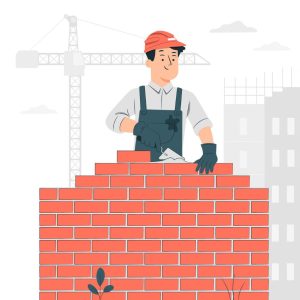
- They develop structures using bricks, stones, or concrete blocks.
- They construct walls, floors, or other structures.
- They use tools like levels, and saws to shape and cut materials.
- They assist in the construction or repair of buildings, bridges, or other masonry projects.

20. House Help

- House helpers are our helpers who assist with household chores and daily tasks in our home.
- They clean and organize rooms, sweep floors, and do laundry.
- They prepare meals or help with cooking and washing dishes.
- They also provide support in maintaining a tidy and comfortable living environment.
Community helpers work for the better of the community and help people to live a convenient life. They work to earn their living and provide support to us in different situations.
Frequently Asked Questions
Community helpers help us by providing important services and support for our well-being. They include professions such as doctors, nurses, police officers, firefighters, teachers, garbage collectors, and many others who play vital roles in our daily lives.
They are individuals in different professions who work for the welfare and betterment of the community. They provide assistance, services, and expertise that are needed for the smooth functioning and development of society.
Appreciating community helpers can be done in several ways. You can show appreciation by saying thank you or organizing initiatives to honor their contributions.
Teaching children about community helpers is important because it helps them understand the roles of people in society. They also understand the importance of cooperation and interdependence. Children start to recognize people whom they should contact in different emergencies.
Related posts
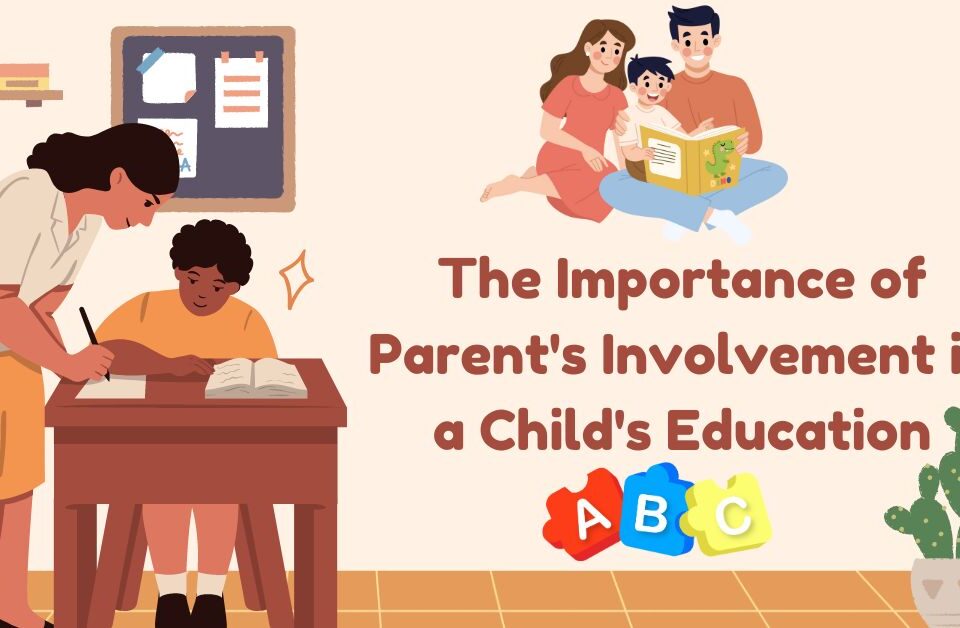
The Importance of Parental Involvement in Child Education
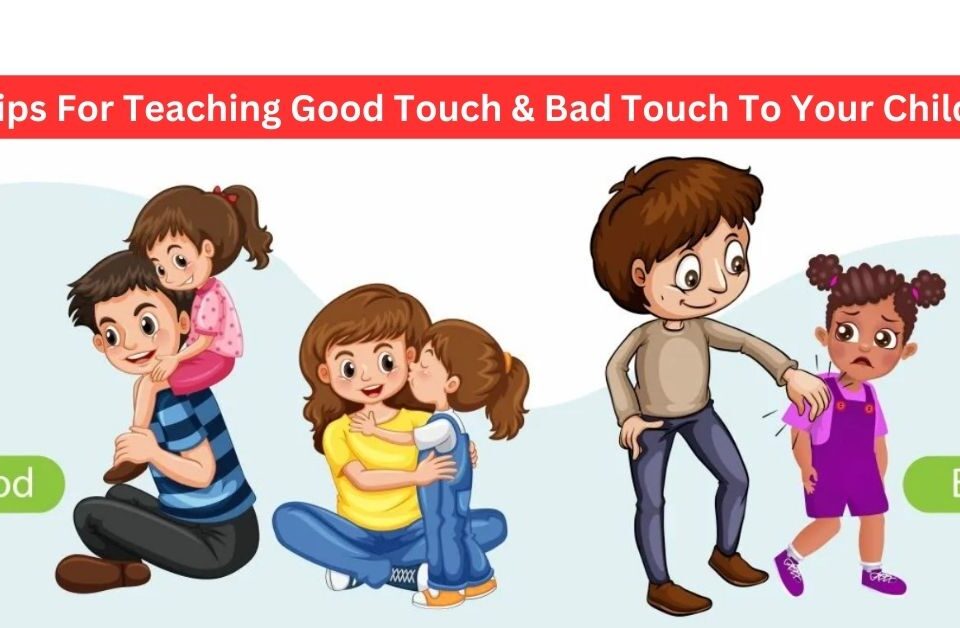
Tips For Teaching Good Touch & Bad Touch To Your Child
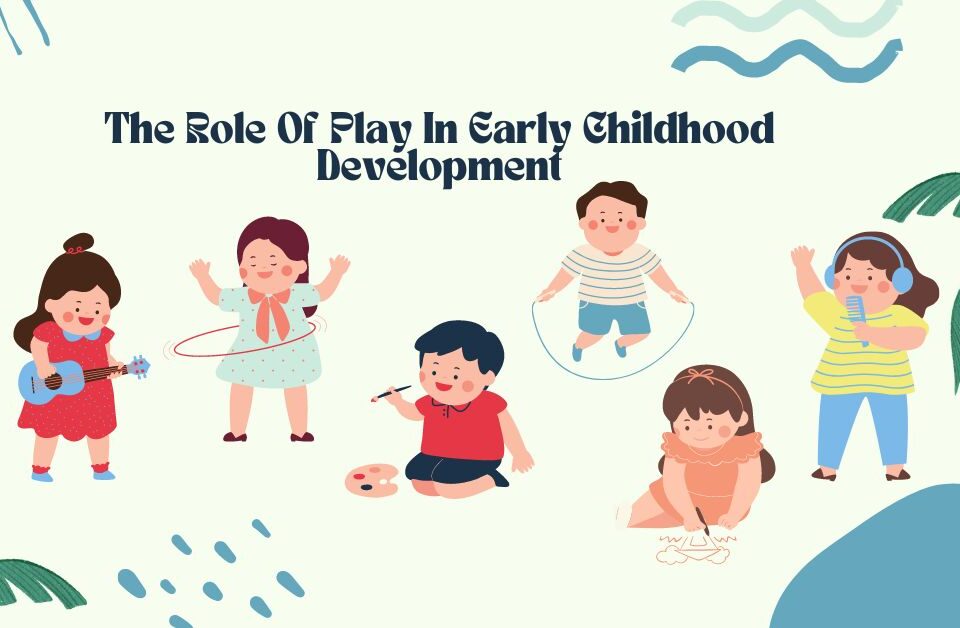
The Role Of Play In Early Childhood Development
Leave a reply cancel reply.
Your email address will not be published. Required fields are marked *
Save my name, email, and website in this browser for the next time I comment.

Academic Test Guide
10 Lines on Community Helpers in English for Students & Children
In this article, we are providing Informative 5 | 10 Lines on Community Helpers in English Students & kids. In these lines, we have tried our best to provide a short essay on Community Helpers for classes 1,2,3,4,5,6,7,8,9,10,11,12
5 | 10 Lines on Community Helpers
10 Sentences on Community helpers
1. Community helpers play a vital role in society.
2. Community helpers include doctors, teachers, police officers, Soldiers, farmers, etc.
3. They help in solving people’s different problems.
4. They make the life of people easy and comfortable.
5. We cannot imagine our life without community helpers.
6. Our necessities cannot be fulfilled without them like we cannot get food without a farmer’s help; we cannot get treatment without the help of a doctor.
7. We should respect our community helpers.
8. It is our duty to provide them support when needed.
9 . We should be kind to them.
10. Community helpers are blessings given to us by God, so we should value them.
10 lines on Doctor
10 lines on Farmer
Few lines on Community Helpers

5 Lines on Community Helpers
1. Community helpers are those people who do their job by helping people, without them our society cannot function in a proper manner.
2. Without them, we cannot live our lives in a better environment.
3. Police officers and firefighters help us in an alarming situation.
4. In a medical emergency, doctors help us.
5. Soldiers stand at the border, protect us from the enemy.
6. We should teach our children to respect community helpers.
5 Lines on community helper
1 Nurses are community helpers who care for us in hospitals and help doctors.
2 During fire incidents, firefighters help to keep us safe.
3 Doctors help us feel better when we’re sick.
4 In schools, teachers help to learn new things daily.
5 Mail carriers deliver letters and packages to our homes.
Some Community helpers examples – doctors, nurses, soldiers, teachers , dentists, postmen, bus drivers, chefs, plumbers, firefighters, farmers, gardeners, cleaners, etc
10 Lines on Dentist
The Policeman Essay 10 Lines
10 lines on Soldier
Leave a Comment Cancel reply
Save my name, email, and website in this browser for the next time I comment.

Paragraph on Community Helpers
Students are often asked to write a paragraph on Community Helpers in their schools. And if you’re also looking for the same, we have created 100-word, 200-word, and 250-word paragraphs on the topic.
Let’s take a look…
Paragraph on Community Helpers in 100 Words
Community helpers are people who help us in our daily life. They do different jobs to keep our community healthy, safe, and clean. Some helpers are doctors, who cure our sickness. Firefighters put out fires and save people. Teachers help us learn new things. Policemen keep us safe from bad guys. Bakers make yummy bread and cakes. Garbage collectors keep our neighborhood clean by taking away waste. Mail carriers bring us letters and packages. Each helper is important in our life. They work hard to make our community a good place to live. We should always thank them for their work.
Paragraph on Community Helpers in 200 Words
Community helpers are people who live and work right in our own neighborhoods. They have jobs that help make our lives better. There are many types of community helpers, like teachers, doctors, firefighters, and police officers. Teachers help us learn new things in school. Doctors keep us healthy by treating us when we’re sick. Firefighters are brave people who put out fires and save people from danger. Police officers keep us safe by making sure people follow the laws. Then there are also postmen who bring letters and packages to our homes, and garbage collectors who keep our neighborhoods clean. Bakers and grocers provide us with food, while bus drivers help us travel from one place to another. All these helpers are very important. They work hard every day to make sure we have everything we need to live happy and safe lives. Next time you see a community helper, remember to say thank you for their hard work. They truly make our community a better place to live.
Also check:
- 10 Lines on Community Helpers
Paragraph on Community Helpers in 250 Words
Community helpers are essential people who work in our neighborhoods to make our lives easier and better. They perform different jobs that assist us in our daily activities and contribute to keeping our community safe, clean, and orderly. Examples of community helpers include firefighters, police officers, doctors, nurses, teachers, garbage collectors, mail carriers, and many others. Firefighters and police officers ensure our safety by preventing crime and rescuing us from dangerous situations. Doctors and nurses help us when we are sick or injured, keeping us healthy. Teachers educate us, helping us gain knowledge and skills for a better future. Garbage collectors ensure our surroundings are clean, while mail carriers deliver letters and packages right to our doorsteps. Additionally, there are many unsung heroes like farmers who provide us with food, and construction workers who build houses and roads. Community helpers are not just workers, but they are the backbone of our society. They play a crucial role in maintaining the overall health and wellbeing of the community. It’s important for us to respect and appreciate their invaluable service. Without community helpers, our lives would be much more challenging. So, let’s always remember to thank them for their hard work and dedication. This understanding of community helpers teaches us about cooperation, unity, and the importance of every role in society.
That’s it! I hope the paragraphs have helped you.
Explore other popular paragraph topics:
- Paragraph on Community
- Paragraph on Comet
- Paragraph on College Education
Apart from these, you can look at all the essays by clicking here .
Happy studying!
Leave a Reply Cancel reply
Your email address will not be published. Required fields are marked *
Save my name, email, and website in this browser for the next time I comment.

Essay on Community Helpers
In the intricate fabric of society, community helpers are the threads that weave together the safety, well-being, and functionality of our communities. These unsung heroes, often working behind the scenes, play crucial roles in ensuring the smooth functioning of our daily lives. In this essay, we delve into the diverse world of community helpers, acknowledging their contributions, sacrifices, and the impact they have on shaping the communities we call home.
Quick Overview:
- Police officers, firefighters, and paramedics are the first responders who bravely step into emergencies, ensuring public safety and providing immediate assistance during crises.
- Their dedication to protecting lives and property is essential for maintaining law and order and responding swiftly to accidents or disasters.
- Doctors, nurses, and other healthcare professionals are frontline warriors in the battle against illnesses and diseases.
- Their commitment to providing medical care, promoting health awareness, and saving lives makes them integral community helpers.
- Teachers, school staff, and educational professionals contribute to the growth and development of the community’s future generations.
- Their role extends beyond classrooms, shaping young minds, imparting knowledge, and fostering a positive learning environment.
- Sanitation workers, including waste collectors and cleaners, ensure the cleanliness and hygiene of our communities.
- Their tireless efforts in waste management contribute to the prevention of diseases and the overall well-being of residents.
- Bus drivers, conductors, and other public transport workers facilitate the mobility of community members, connecting different parts of the city or town.
- Their services play a vital role in ensuring accessibility and convenience for residents, contributing to the efficiency of urban transportation.
Conclusion:
In conclusion, community helpers are the pillars that support the foundation of a thriving and harmonious society. Their dedication, selflessness, and often overlooked contributions create a tapestry of communal well-being. As we go about our daily lives, it’s crucial to recognize and appreciate the invaluable roles played by these unsung heroes.
The interdependence of community helpers reflects the interconnectedness of our lives. From the safety provided by first responders to the nurturing guidance of educators and the cleanliness maintained by sanitation workers, each role is a vital thread contributing to the vibrant fabric of our communities. As we express gratitude for their efforts, let us also advocate for fair wages, better working conditions, and the recognition these individuals deserve.
In acknowledging the pivotal roles of community helpers, we honor the spirit of service that binds us together. They exemplify the principle that a community thrives when its members actively contribute to the well-being of others. By valuing and supporting our community helpers, we not only strengthen the foundation of our society but also foster a culture of mutual respect, compassion, and collaboration that echoes through generations.

Rahul Kumar is a passionate educator, writer, and subject matter expert in the field of education and professional development. As an author on CoursesXpert, Rahul Kumar’s articles cover a wide range of topics, from various courses, educational and career guidance.
Related Posts

How To Write An Argumentative Essay On Political Science?

Creative Essay Writing Techniques: How To Write a Creative Essay

10 Lines on My Mother in English

COMMENTS
Feb 18, 2024 · 250 Words Essay on Community Helpers Who Are Community Helpers? Community helpers are people who work to help others in our towns and cities. They do many jobs that make our lives easier and safer. Some helpers are teachers, firefighters, doctors, and police officers. They all have different tasks, but their main goal is to serve the community.
Aug 10, 2023 · Community workers are citizens who work in our community t o ensure the well-being of the community. They perform their duties to ensure that people in society stay happy, safe, and healthy. Community helpers perform their duties to the best to ensure that we live in a safe environment and have the necessary services.
Mar 22, 2023 · Community workers include doctors, police, soldiers, cleaners, teachers, other health workers, etc. They play an important role in society.
Mar 23, 2023 · 10 Lines Essay On Community Helpers Teacher In English For Students • Teachers are community helpers. Teachers are people who teach in schools.
Jan 20, 2022 · In these lines, we have tried our best to provide a short essay on Community Helpers for classes 1,2,3,4,5,6,7,8,9,10,11,12. 5 | 10 Lines on Community Helpers . 10 Sentences on Community helpers 1. Community helpers play a vital role in society. 2. Community helpers include doctors, teachers, police officers, Soldiers, farmers, etc. 3.
Paragraph on Community Helpers in 100 Words. Community helpers are people who help us in our daily life. They do different jobs to keep our community healthy, safe, and clean. Some helpers are doctors, who cure our sickness. Firefighters put out fires and save people. Teachers help us learn new things. Policemen keep us safe from bad guys.
The helpers that I decided to discuss were the police officer, firefighter, dentist, doctor, farmer, and builder because these community helpers play a prevalent part in the students’ community. Each day that a new community helper is introduced there will be a guest speaker coming into the room to share about their job, talk about their ...
Jan 6, 2024 · This essay sheds light on the invaluable contributions of various helpers who, through their dedication and service, enrich our lives and contribute to the fabric of society. Teachers: Among our most significant helpers are teachers, who mold and shape the future by imparting knowledge and values to the next generation.
Apr 12, 2019 · Write an essay on community helpers => Doctors, teachers, policemen, etc. in our society are community helpers. ♀️Doctors treat people from sickness. They also check the spread of diseases and give awareness. ♀️Teachers educate us.They teach people about the society, nation, economy, etc. They play a key role in determining the literacy ...
Jan 6, 2024 · Main Menu. Courses Menu Toggle. Subjects; Computer Courses; Full Form; Careers & Jobs; Schools & Colleges Menu Toggle. Coaching & Institutes